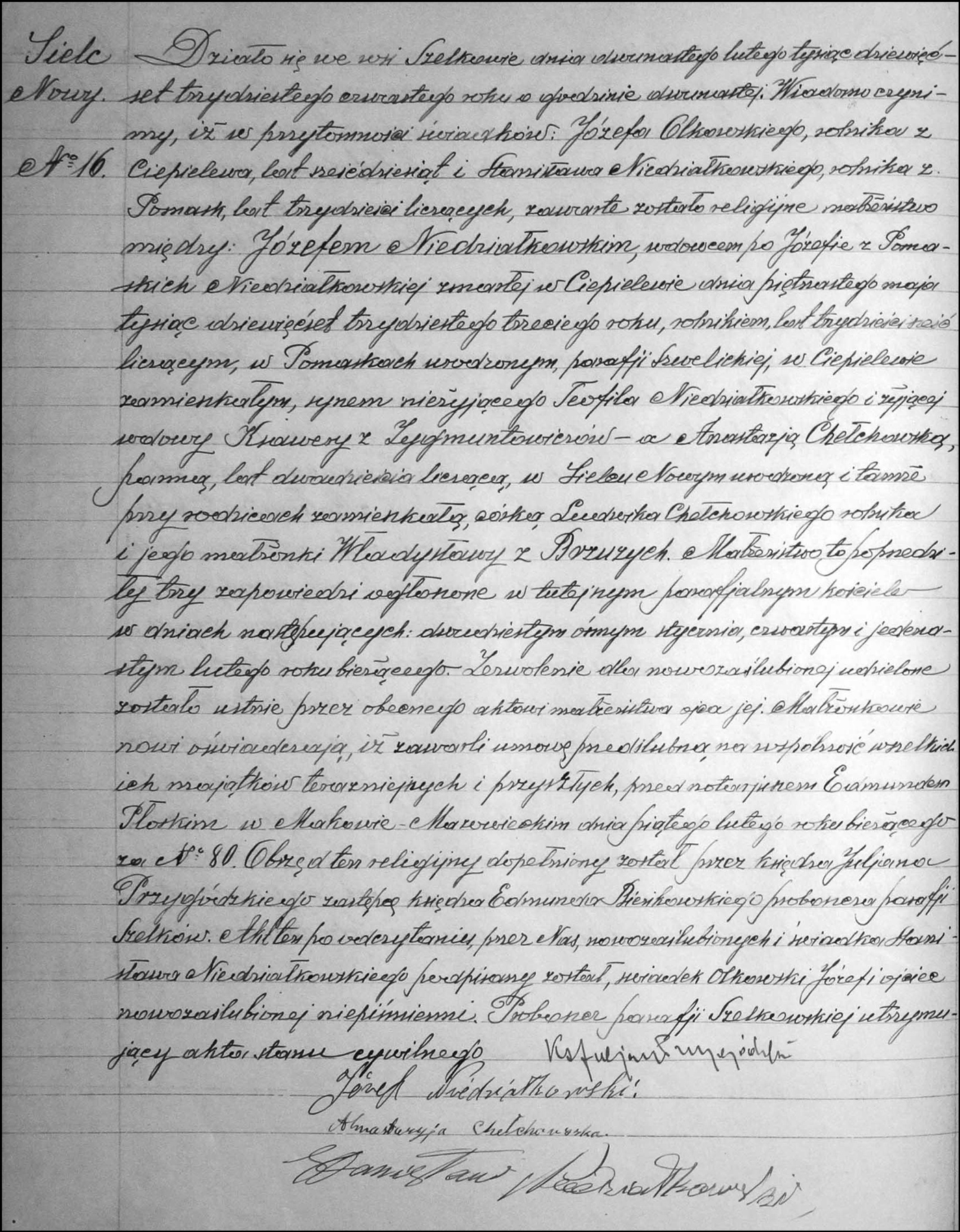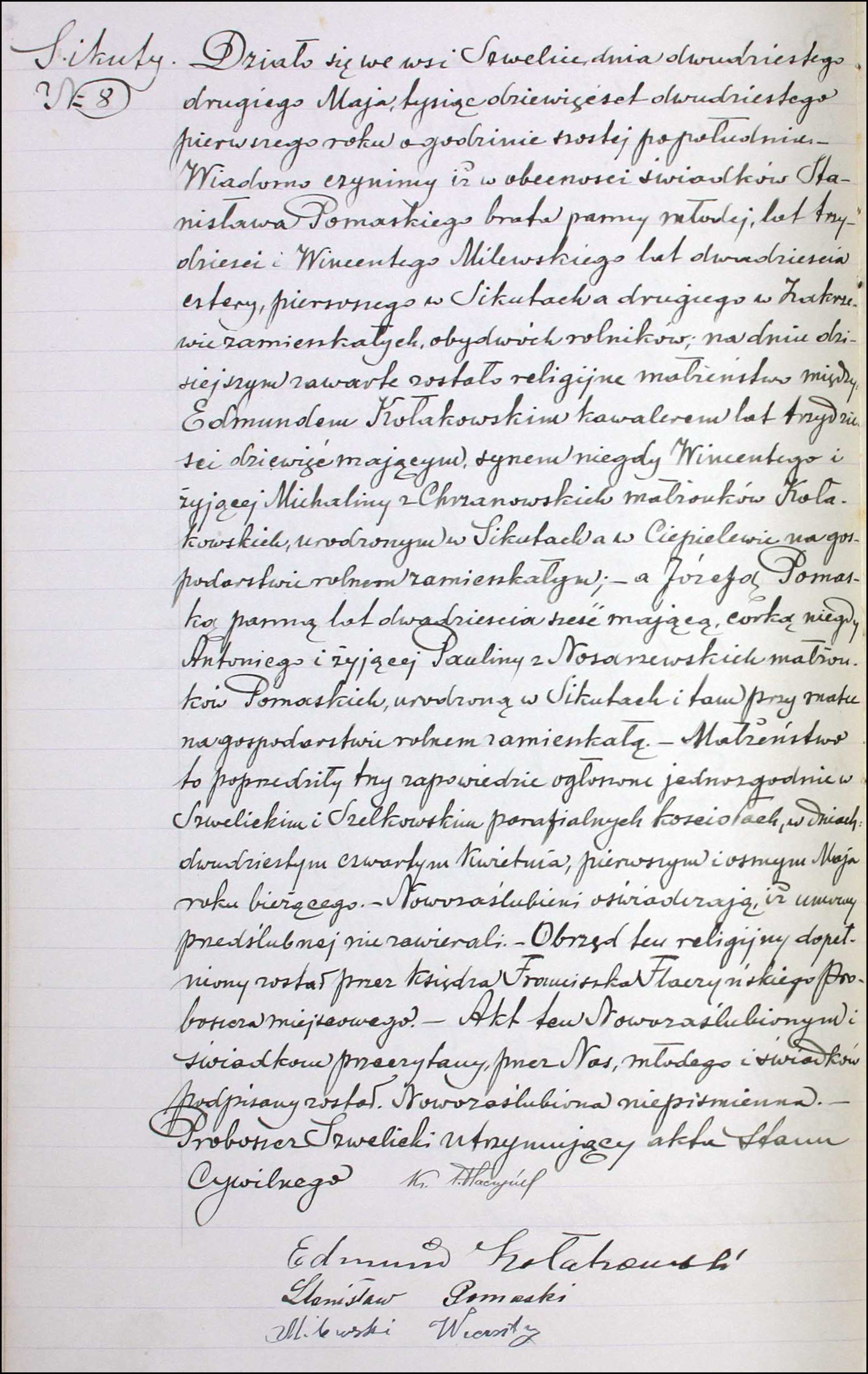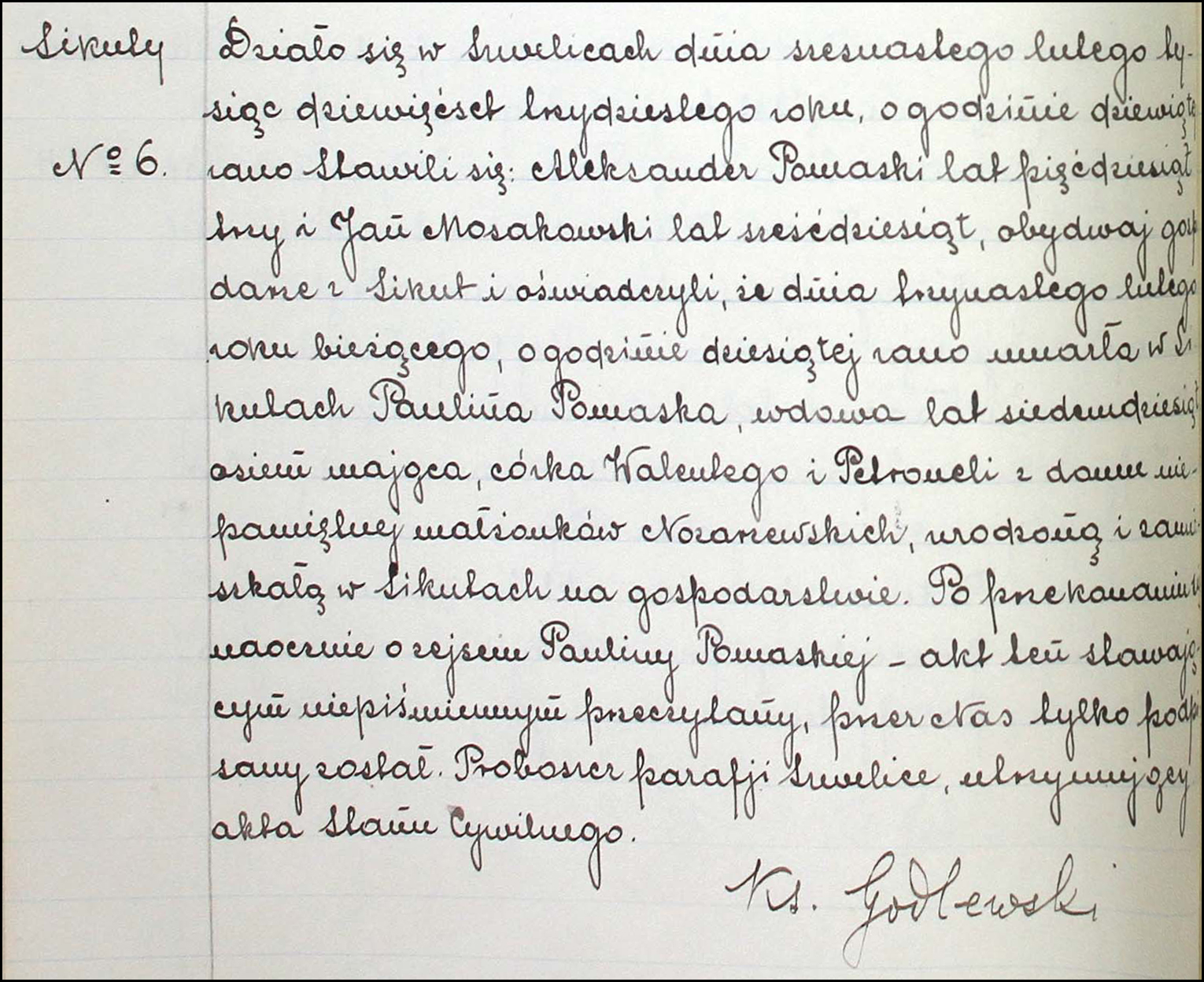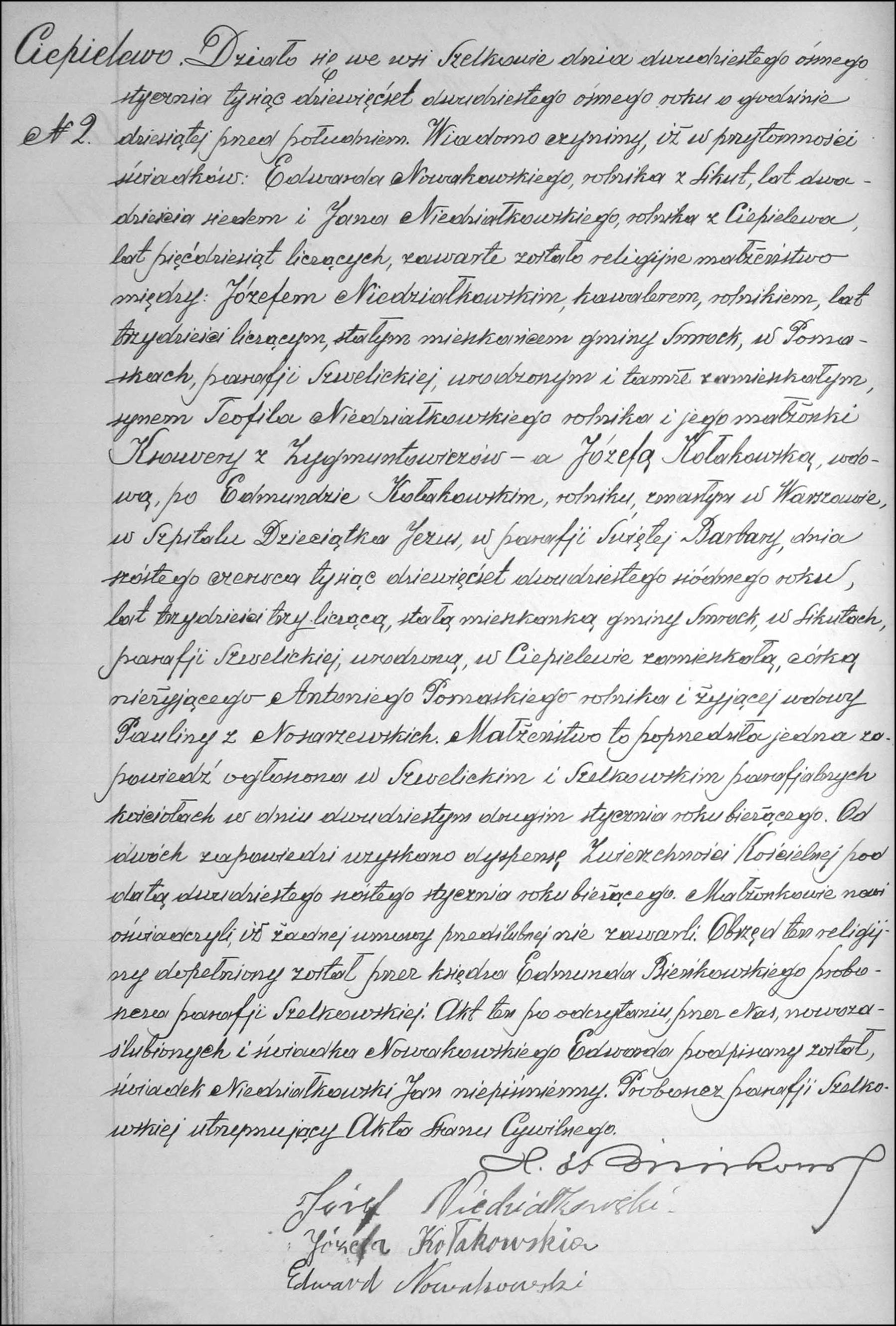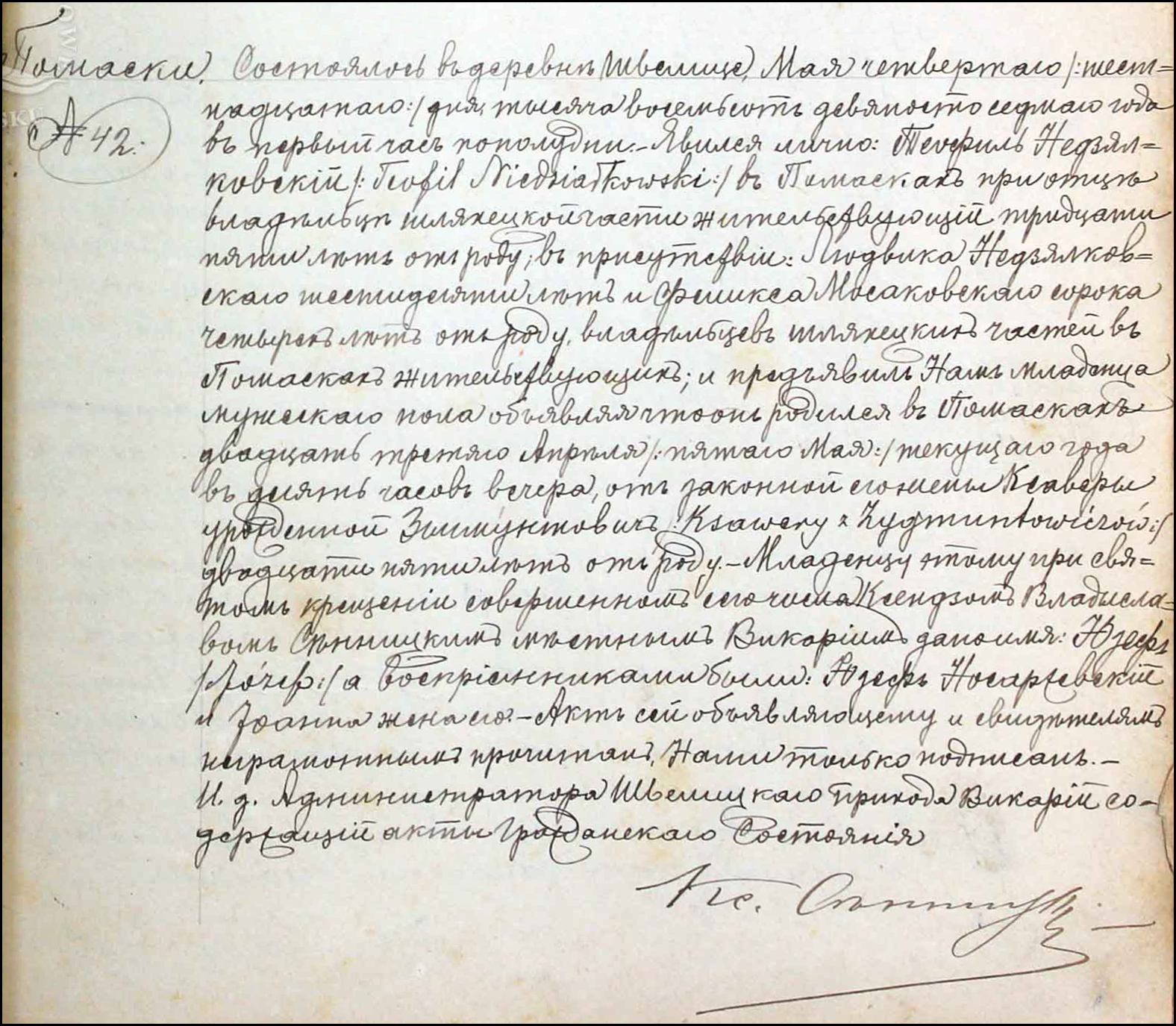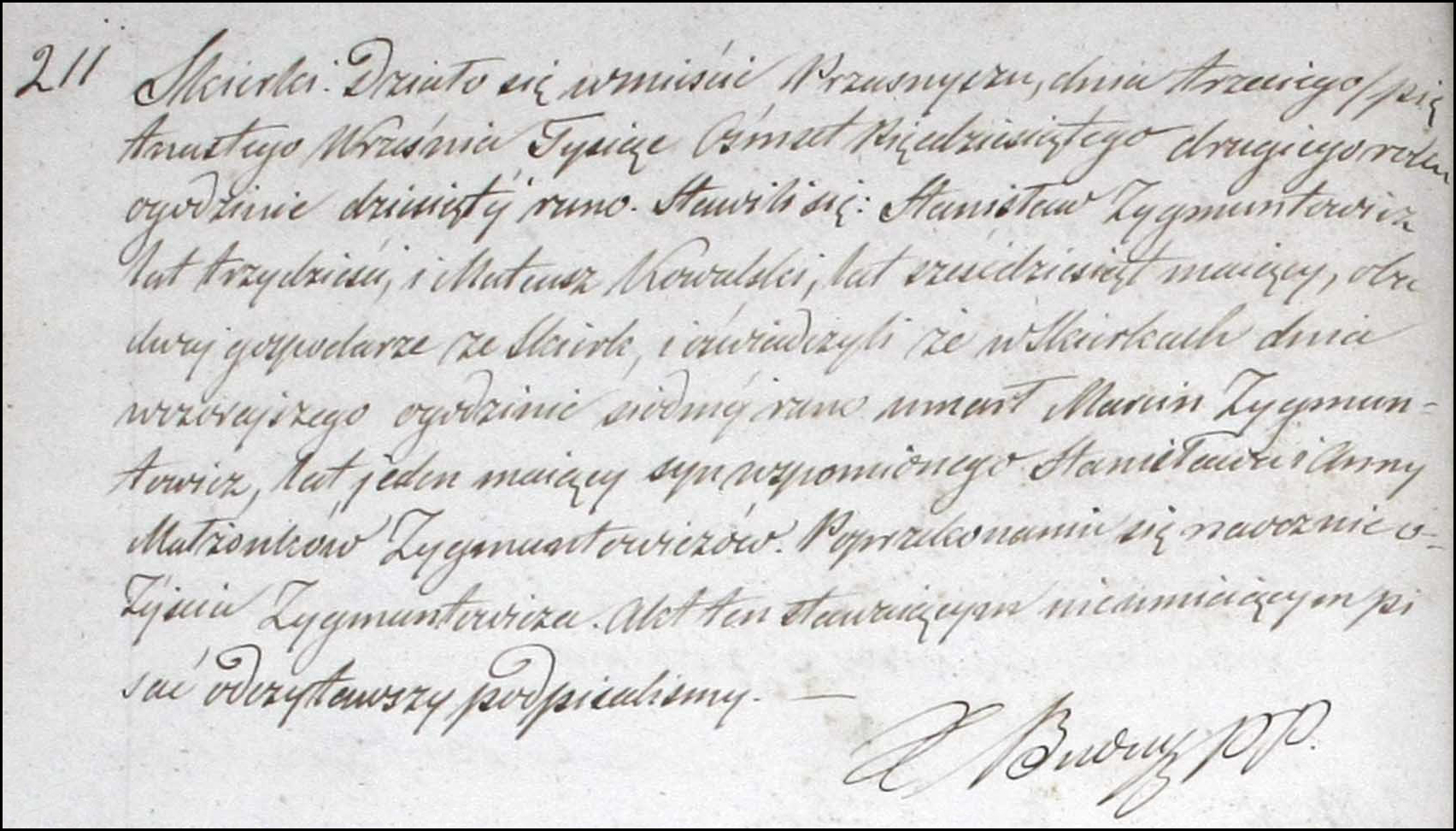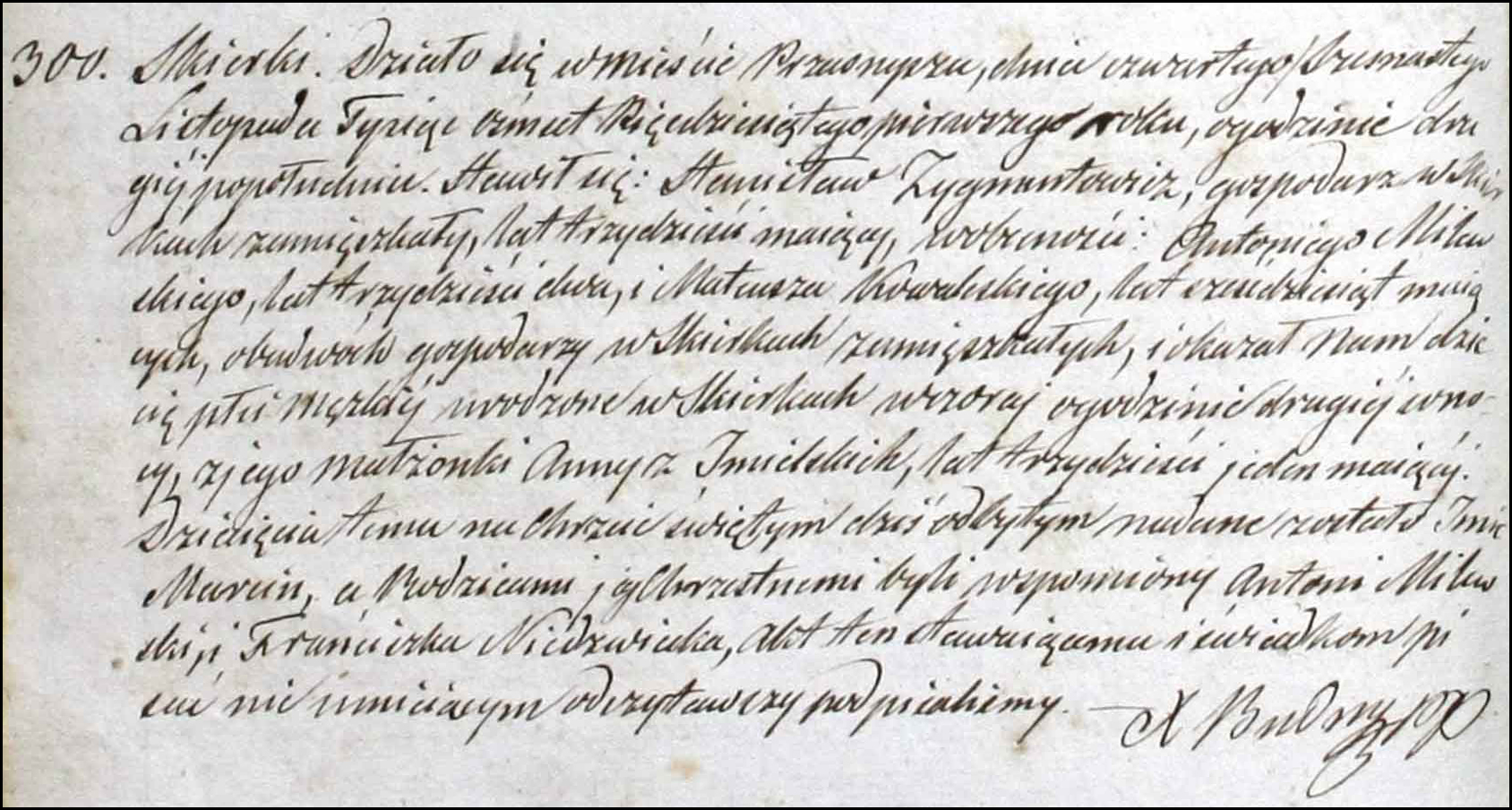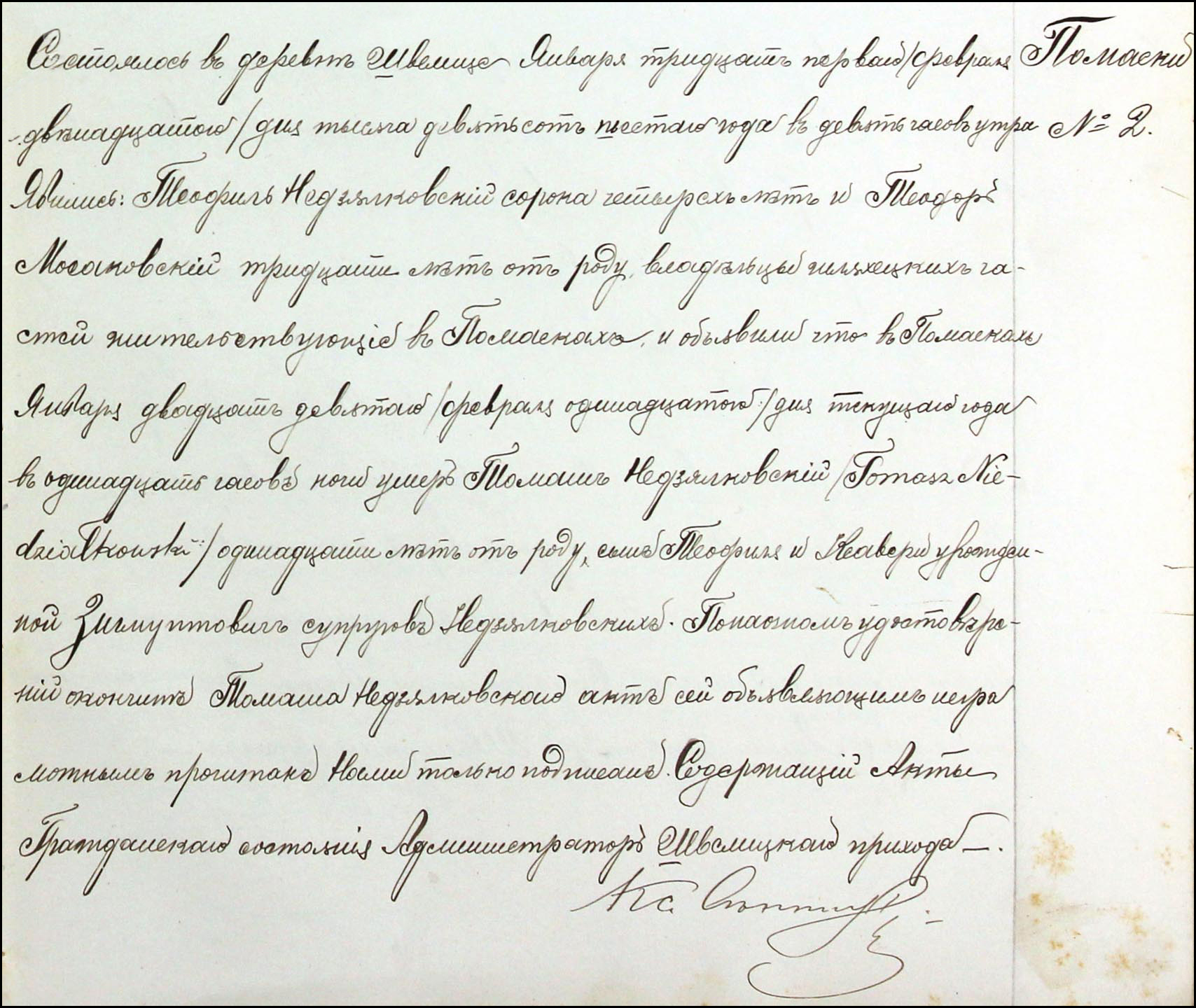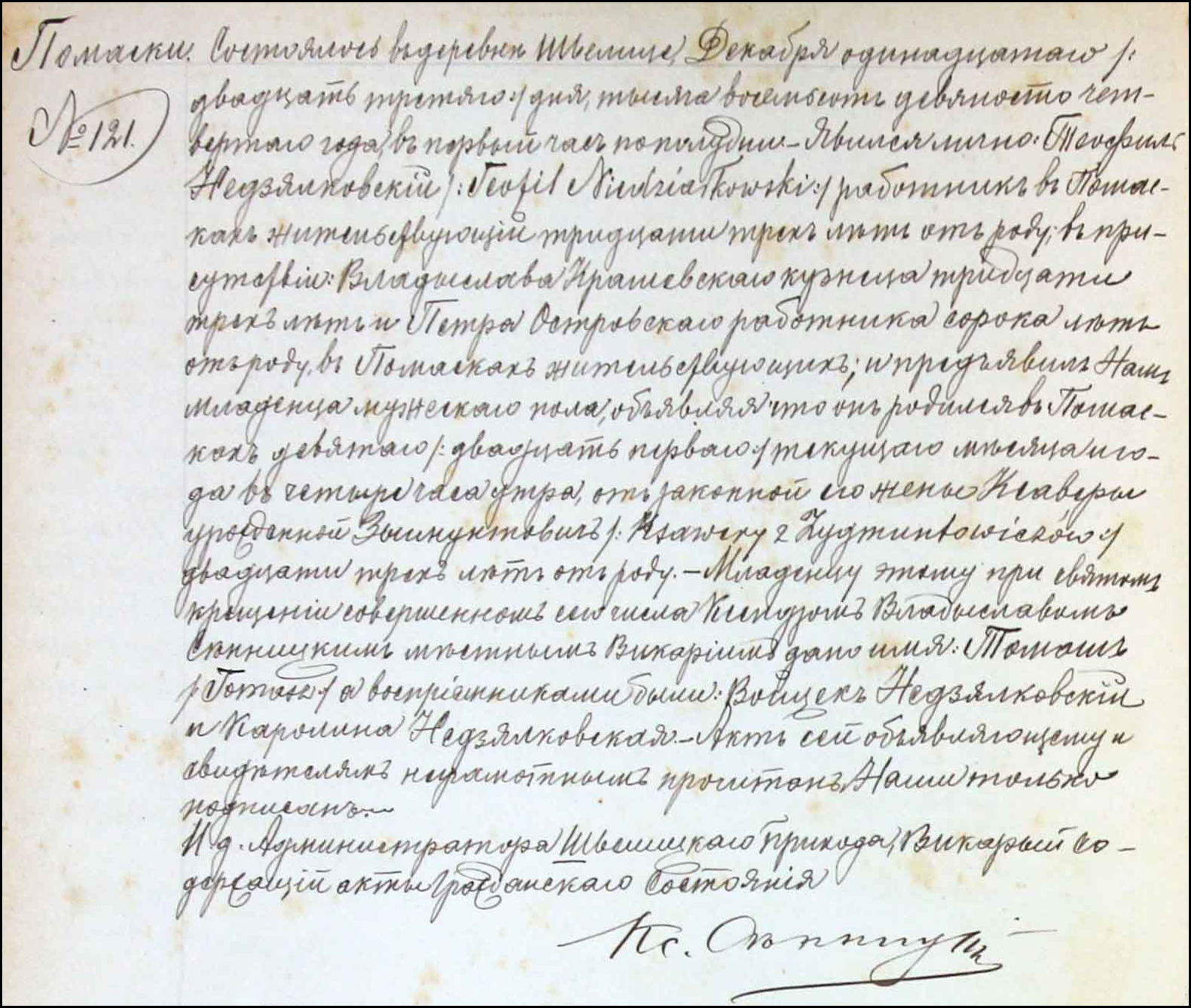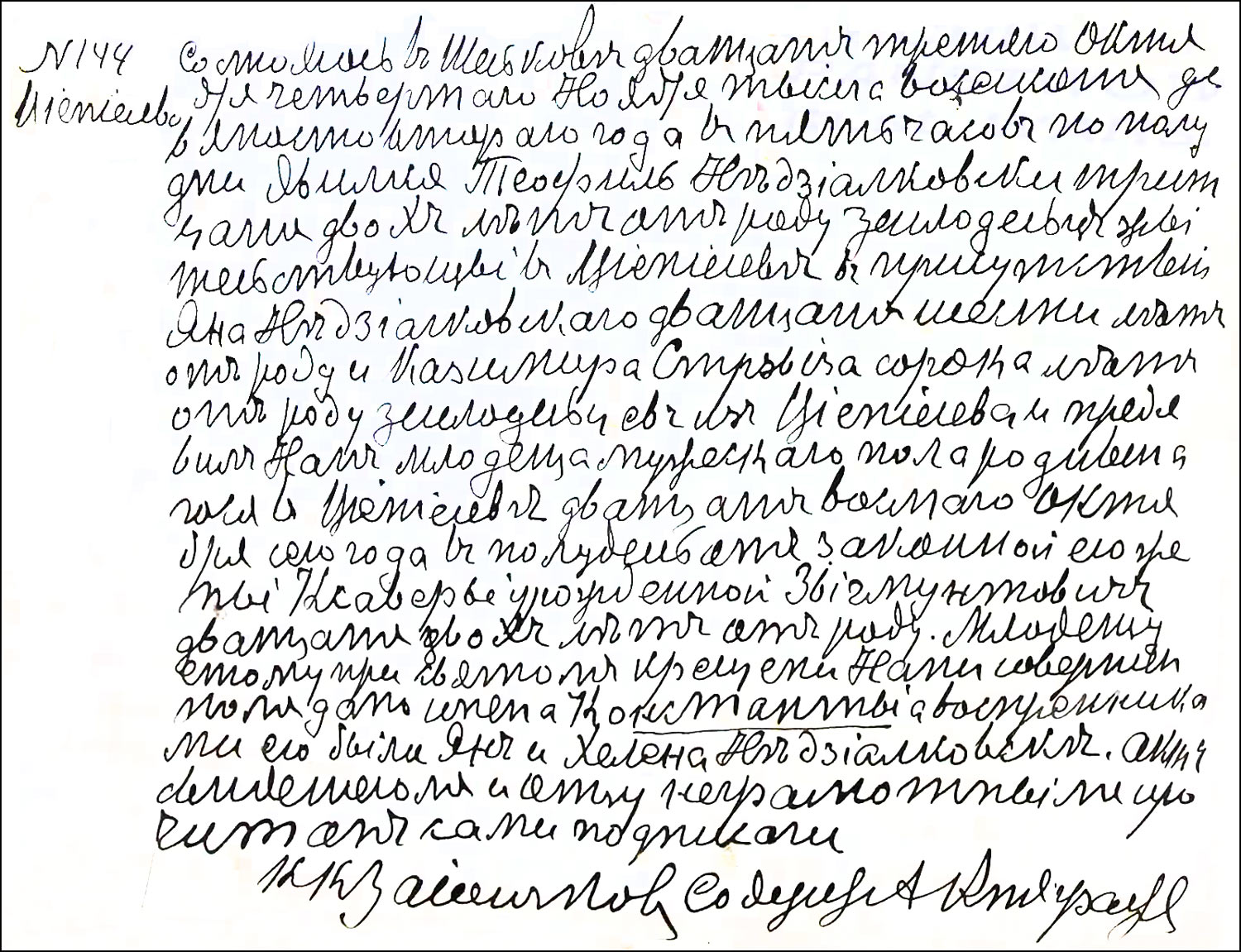Józef Niedziałkowski, son of Teofil Niedziałkowski and Ksawera Zygmuntowicz, was married to Analstazja Chełchowska, daughter of Ludwik Chełchowski and Władysława Brzuzy on 12 July 1934 in Szelków, Maków Mazowiecki Powiat, Warsaw Voivodeship, Second Polish Republic.
SOURCE: Parafia pw. św. Jana Chrzciciela (Szwelice, Maków Powiat, Warsaw Voivodeship, Second Polish Republic), “Duplicate Civil Registrations of the Parish of Szwelice for the Year 1934,” folio 61 verso, entry 16, marriage record of Józef Niedziałkowski and Anastazja Chełchowska, recorded 12 February 1934; State Archives in Pułtusk, digital images, Genbaza (http://metryki.genbaza.pl : accessed 21 May 2016).
Click on the link for a PDF copy of the Marriage Record for Józef Niedziałkowski and Anastazja Chełchowska – 1934. The record, translated from the Polish, states:
Sielc Nowy. No. 16
This happened in the village of Szelków on the twelfth day of February in the year one-thousand nine-hundred thirty-four at the hour of twelve. We make it known that in the presence of witnesses: Józef Olkowski, a farmer from Ciepielewo, sixty years old, and Stanisław Niedziałkowski, a farmer from Pomaski, thirty years old, a religious marriage was contracted between: Józef Nniedziałkowski, the widower of Józefa née Pomaska Niedziałkowska who died in Ciepielewo on the fifteenth day of May in the year one-thousand nine-hundred thirty-three, [he was] a farmer, thirty-six years old, born in Pomaski in the parish of Szwelice, residing in Ciepielewo, son of the deceased Teofil Niedziałkowski and the still-living Ksawera née Zygmuntowicz – and Anastazja Chełchowska an unmarried girl, twenty years old, born in Sielc Nowy and residing there with her family, daughter of Ludwik Chełchowski, a farmer, and his wife Władysława née Brzuzy. This wedding was preceeded by three announcements of the banns in the local parish church on the following days: the twenty-eighth of January, the fourth and eleventh of February of the current year. – Permission for the new bride was granted orally by her father through the current act of marriage. The newlyweds declare that they have entered into a prenuptial agreement on the common Szelków estates present and future, through the notary Edmund Płoski in Makow-Mazowiecki on the fifth day of February of the current year as â„– 80. – This religious rite was performed by the Reverend Julian Przygódski, assistant to the Reverend Edmund Bierzkowski, pastor of the parish of Szelków. After this document was read aloud, it was signed by us, the newlyweds, and the witness Stanisław Niedziałkowski. The witness Józef Olkowski and the father of the bride do not know how to write. The Pastor of the Szelków parish, maintaining the public register. [signed] Reverend Julian Przygódski
[signed] Józef Niedziałkowski
[signed] Anastazja Chełchowska
[signed] Stanisław Niedziałkowski
This record agrees with the marginal notes of marriages in the copy of the Birth and Baptismal Record of Józef Niedziałkowski – 1897.
Copyright © 2016 by Stephen J. Danko

